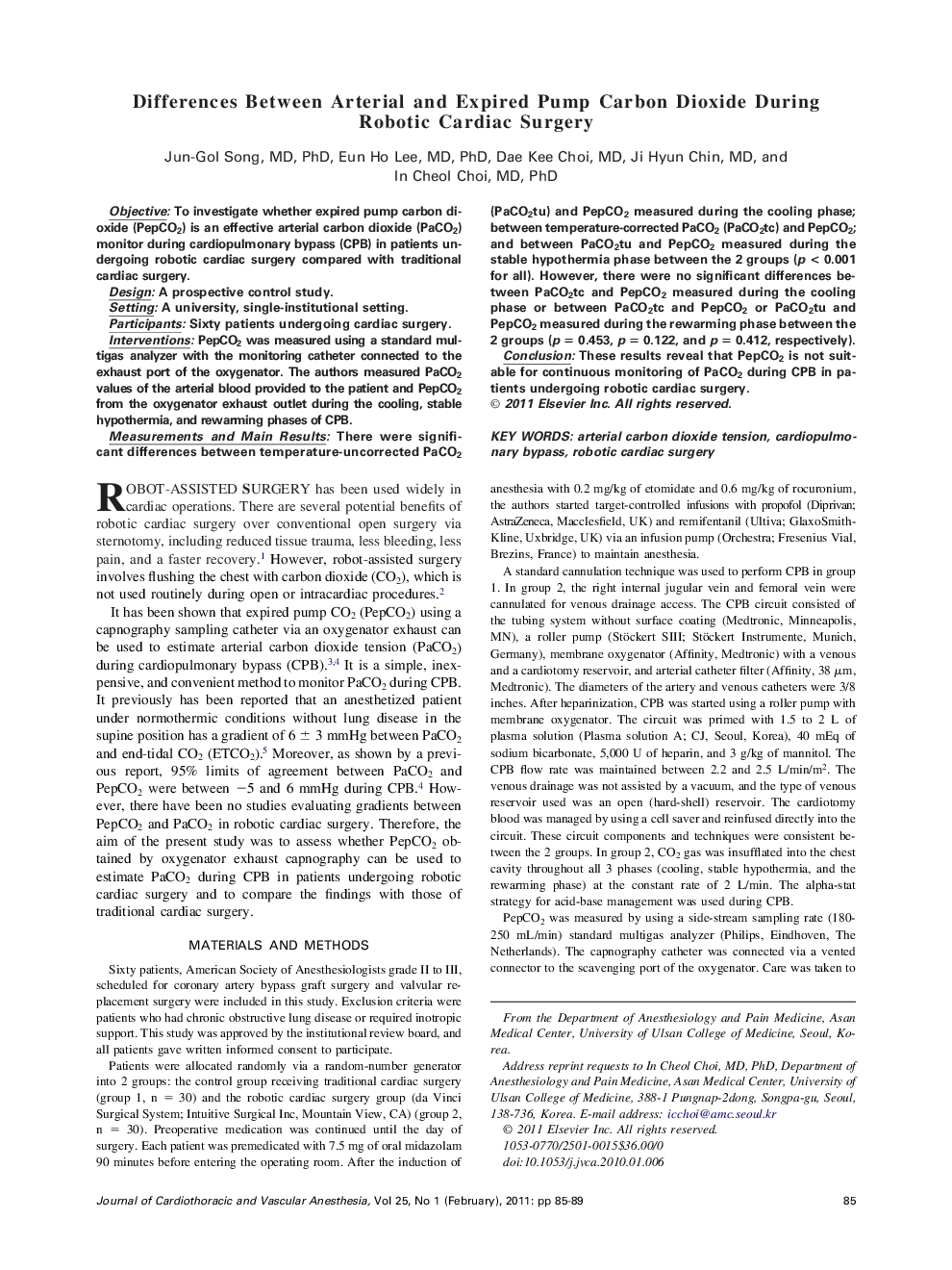| کد مقاله | کد نشریه | سال انتشار | مقاله انگلیسی | نسخه تمام متن |
|---|---|---|---|---|
| 2760098 | 1150166 | 2011 | 5 صفحه PDF | دانلود رایگان |

ObjectiveTo investigate whether expired pump carbon dioxide (PepCO2) is an effective arterial carbon dioxide (PaCO2) monitor during cardiopulmonary bypass (CPB) in patients undergoing robotic cardiac surgery compared with traditional cardiac surgery.DesignA prospective control study.SettingA university, single-institutional setting.ParticipantsSixty patients undergoing cardiac surgery.InterventionsPepCO2 was measured using a standard multigas analyzer with the monitoring catheter connected to the exhaust port of the oxygenator. The authors measured PaCO2 values of the arterial blood provided to the patient and PepCO2 from the oxygenator exhaust outlet during the cooling, stable hypothermia, and rewarming phases of CPB.Measurements and Main ResultsThere were significant differences between temperature-uncorrected PaCO2 (PaCO2tu) and PepCO2 measured during the cooling phase; between temperature-corrected PaCO2 (PaCO2tc) and PepCO2; and between PaCO2tu and PepCO2 measured during the stable hypothermia phase between the 2 groups (p < 0.001 for all). However, there were no significant differences between PaCO2tc and PepCO2 measured during the cooling phase or between PaCO2tc and PepCO2 or PaCO2tu and PepCO2 measured during the rewarming phase between the 2 groups (p = 0.453, p = 0.122, and p = 0.412, respectively).ConclusionThese results reveal that PepCO2 is not suitable for continuous monitoring of PaCO2 during CPB in patients undergoing robotic cardiac surgery.
Journal: Journal of Cardiothoracic and Vascular Anesthesia - Volume 25, Issue 1, February 2011, Pages 85–89